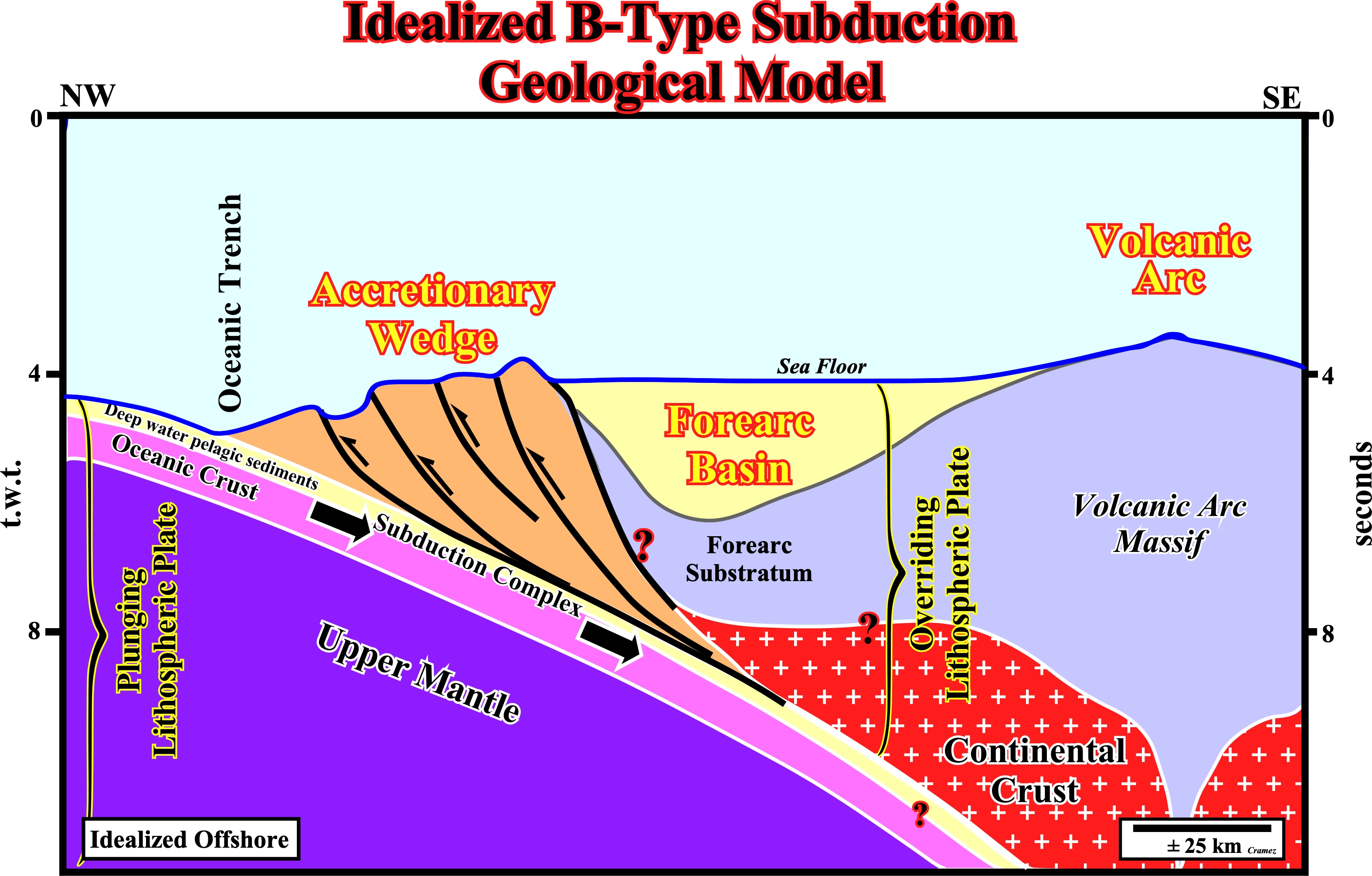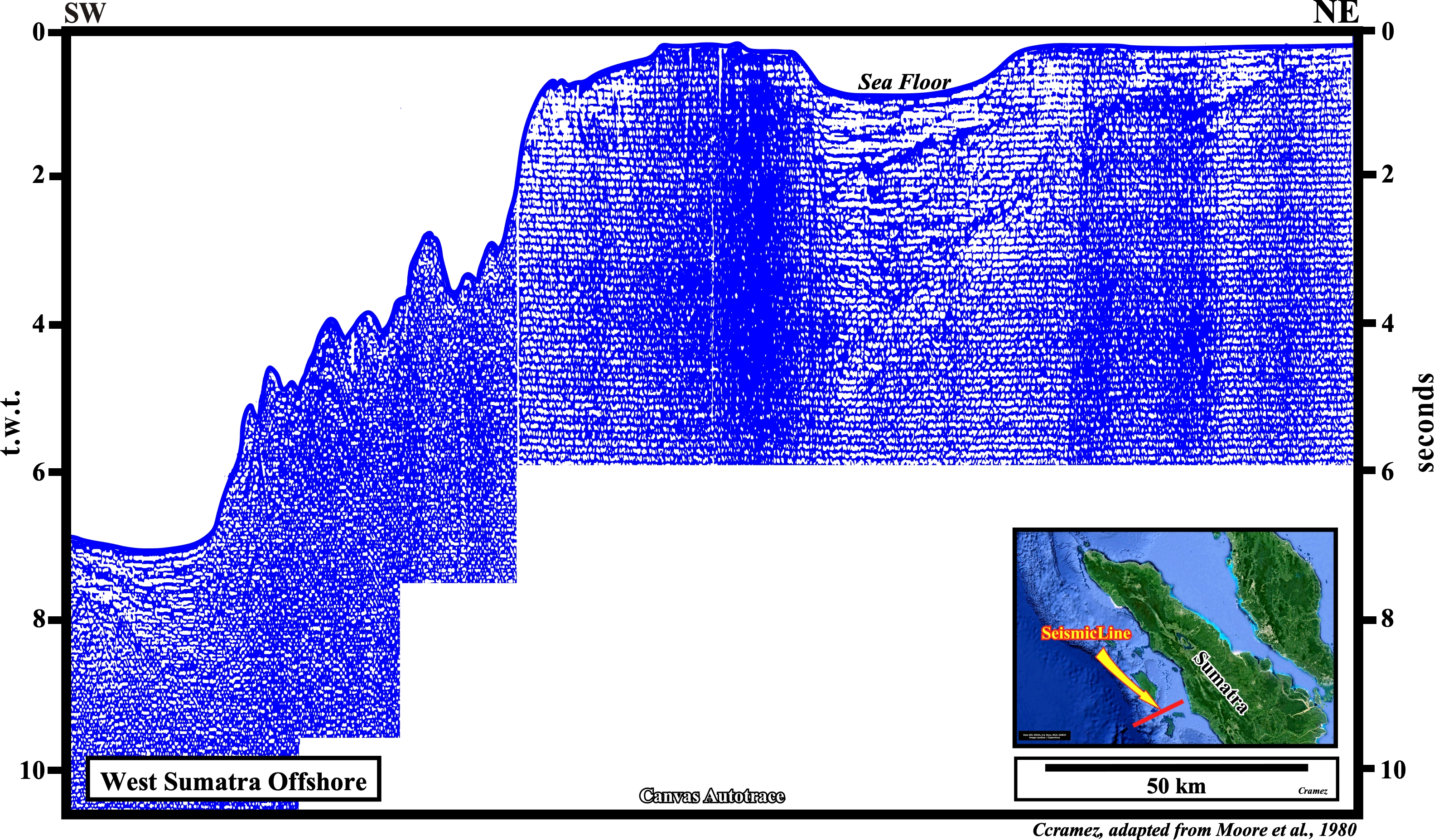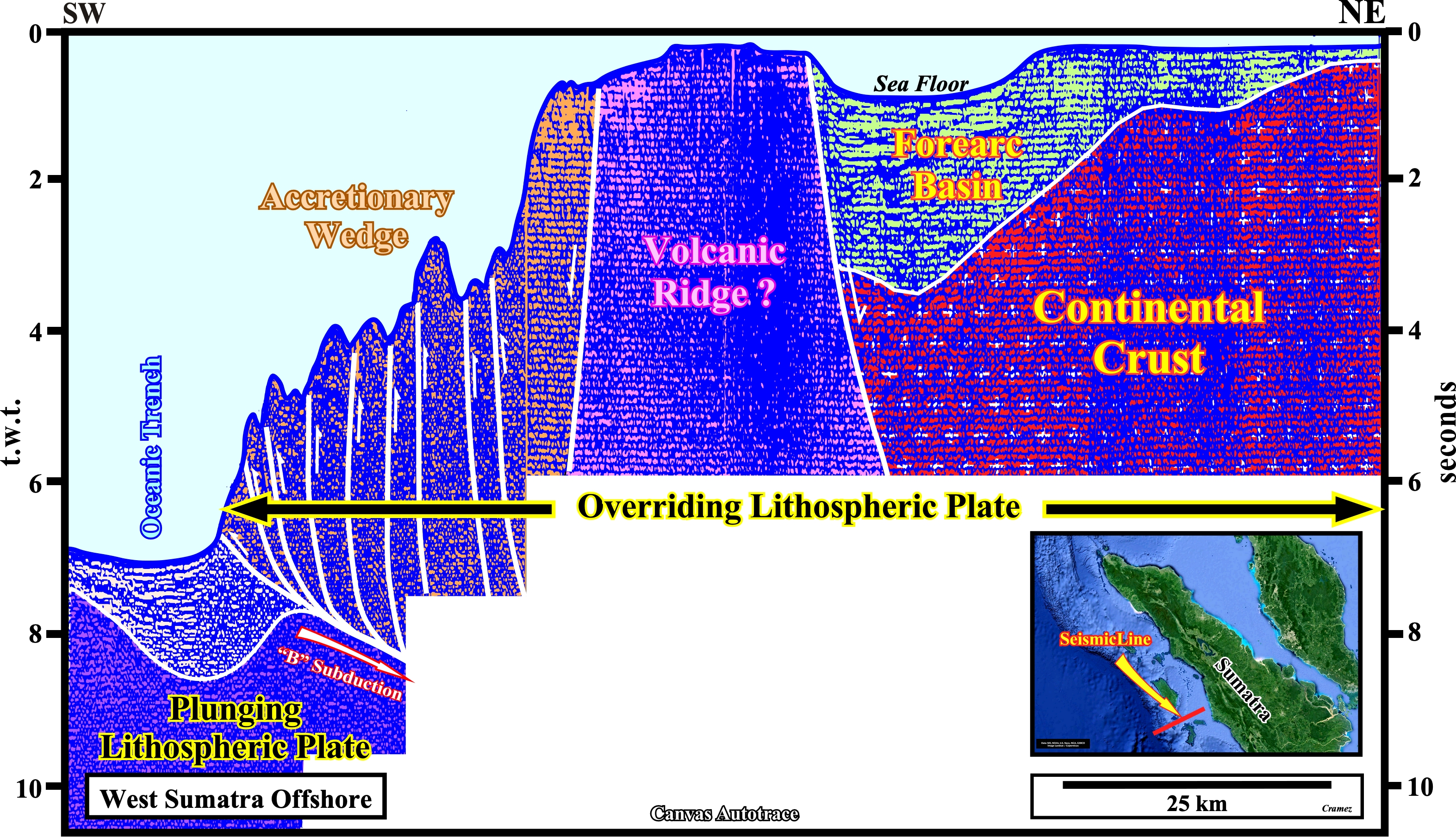

Indonesia Offshore
NW Sumatra Offshore

This idealized geological model for a B-Type subduction zone can be used as a basic knowledge for the tentative interpretations of the NW Sumatra offshore seismic lines or their autotraces. The subsiding or plunging lithospheric is, mainly, oceanic with a thin pelagic sedimentary cover, which dive under the a continental overriding plate, in which different geological body can be observed: (i) A continental crust, more or less, injected by the volcanic and clastic material melted in the deeper parts of the subduction zone, which forms a great part of the volcanic arc massif ; (ii) An accretionary wedge formed, mainly, by the sediments accreted onto the overriding lithospheric plate, i.e., by deep water marine sediments scraped off from the plunging slab of oceanic crust, which downward movement is induced by mantle convection currents (slab suction) and (iii) A forearc basin, which formation is dependent on sediment deposition, subsidence and on the direction and rate of convergence of the lithospheric plates.


The subduction of the oceanic plate (subsiding plate) is quite well visible under the accretionary prism. The strong shortening of the sediments of the accretionary prism suggests a high decoupling between the two lithospheric plates (take into account the pull-up anomaly induced by the lateral variation of the water depth of the continental slope). In the overlapping plate, behind the volcanic ridge, within the continental crust, a Mio-Pliocene forearc basin is also obvious (Siberut/Mentawai geographic basin), which lies between mainland Sumatra mainland and a volcanic ridge high or a sub-areal emergence of accretionary wedge sediments.
Send E-mails to carlos.cramez@bluewin.ch with comments and suggestions to improve this atlas.
Copyright © 2001 CCramez
Last update:
2022